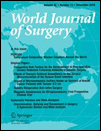Proposal for a Safe and Functional Pancreaticojejunostomy Technique from a Histopathological Perspective
Abstract
Background
To prevent leakage of pancreatic juice from the main pancreatic duct (MPD), complete external drainage appears to be the most effective technique. However, because this requires a pancreatic stent tube to be ligated with MPD, duct-to-mucosa pancreaticojejunostomy (PJ) is difficult. From our histopathological examination, a large amount of pancreatic juice is drained from the ducts other than MPD. This study aimed to evaluate our new conceptual technique of PJ after pancreaticoduodenectomy (PD).
Methods
We considered it important to drain pancreatic juice from the branch pancreatic ducts to the intestinal tract and to perform duct-to-mucosa PJ, while pancreatic juice from MPD is completely drained out of the body. We designed a technique that could simultaneously achieve these points. In our technique, which is based on conventional “two-row” anastomosis, a stent tube is fixed with MPD and its surrounding tissue by purse-string suture at the cut surface of the pancreas, and duct-to-mucosa PJ is concomitantly performed.
Results
Of 45 patients undergoing PD, 12 of soft pancreas underwent surgery with this technique. According to the classification of the International Study Group on Pancreatic Fistula, a Grade A PF was observed in four patients, whereas no patient had a Grade B or C PF.
Conclusions
We propose our anastomotic technique that could simultaneously prevent PF and keep the pancreatic duct patent.




